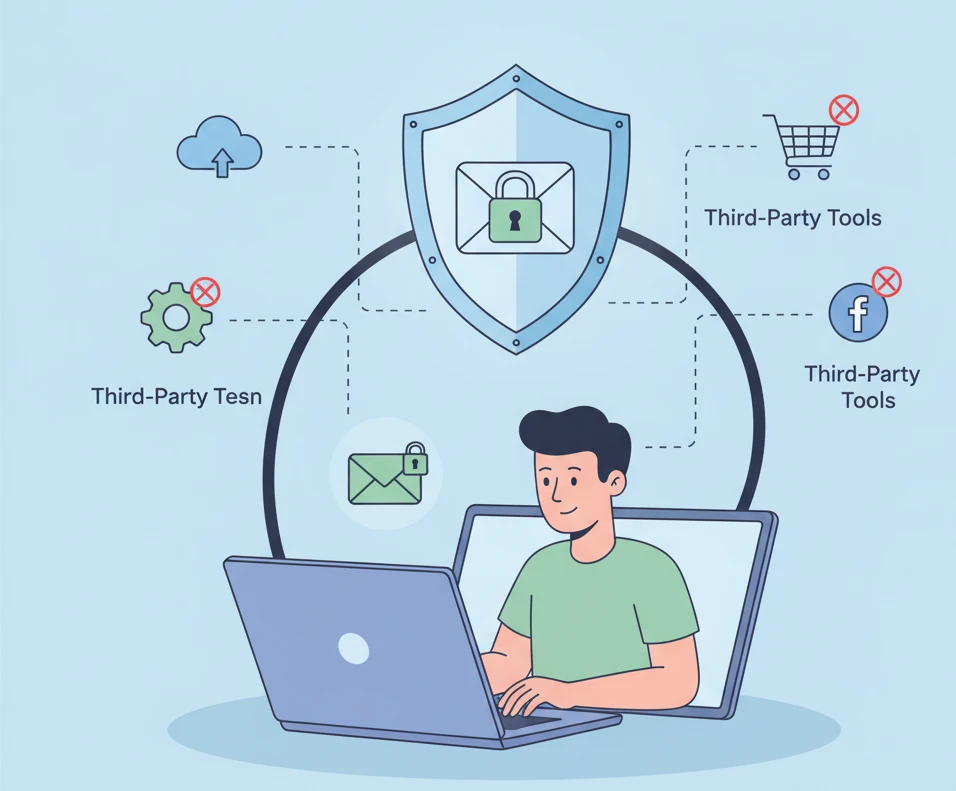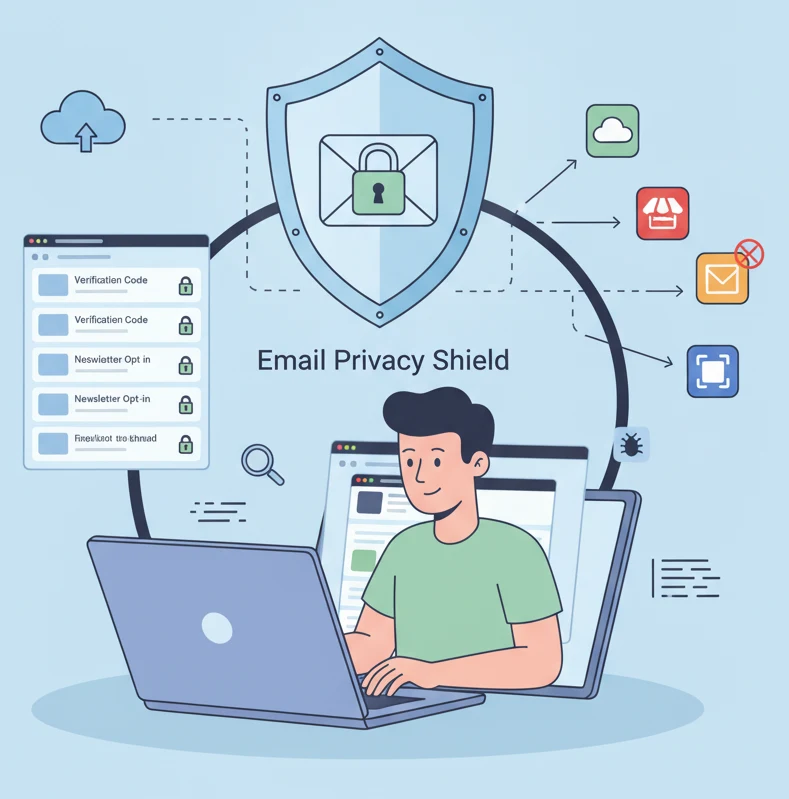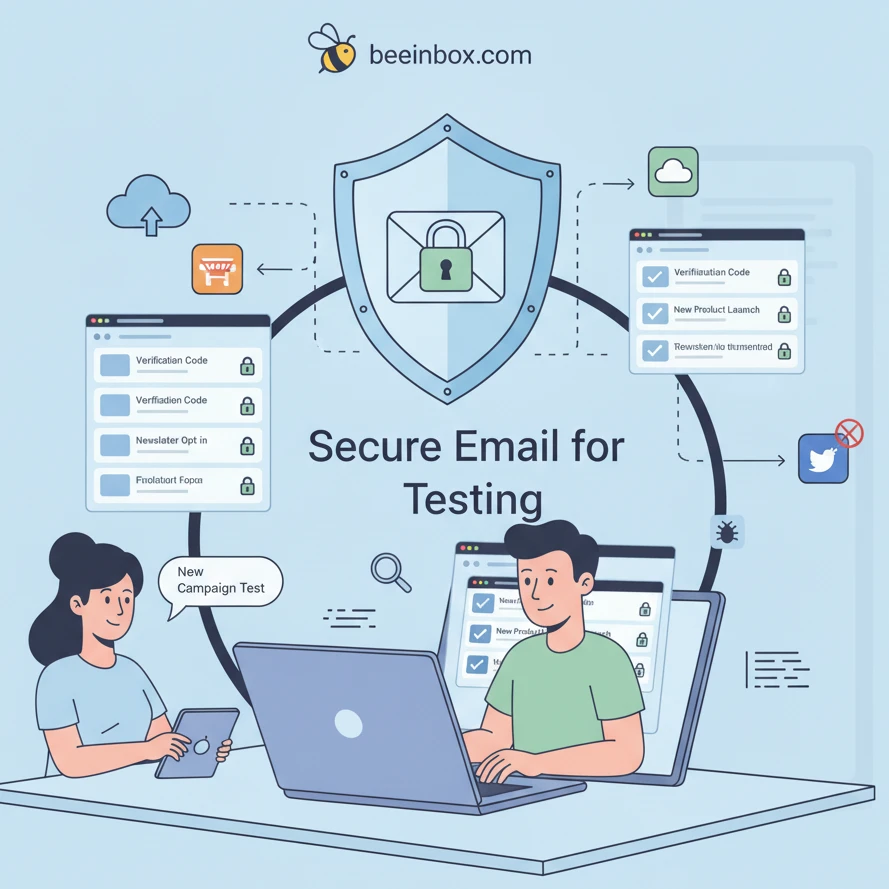Avoiding Personal Email Leaks While Testing Third-Party Services
Testing new apps, marketing tools, or online platforms is fun - until your real inbox gets buried in spam. If you’ve ever used your personal email for beta access or sign-ups, you probably know how fast things can go wrong. That’s why privacy-conscious users rely on 10 minute email and other temporary email tools to stay safe during testing.
In fact, research shows that in 2023 around 45% of all email traffic was spam, which highlights how exposed inboxes are when you use your main address for every sign-up. EmailToolTester collected that data. Once your email ends up stored in test databases or third-party systems, the risk of leaks or unwanted follow-ups rises dramatically.

Why Real Emails Are at Risk During Testing
Every signup, form, or demo registration stores your email somewhere - sometimes in analytics dashboards, sometimes in backups. Even test environments that seem harmless can keep that data for long periods. Later, if a breach occurs or the company sells user info, your personal inbox becomes an easy target.
Another issue? The one-email-per-signup limitation. Most tools or SaaS services only allow one account per email address. Using your main address repeatedly means you’ll quickly run out of unique sign-ups and expose your data multiple times. A temporary email solves this by giving you fresh, isolated inboxes for each test.
If you want to understand how fake or disposable addresses work and what to watch for, our fake email addresses guide explains exactly what goes on behind the scenes.
Why Temporary Email Is the Smarter Choice
A long duration temp mail or reusable disposable email allows you to register and test without revealing your identity permanently. These inboxes are short-lived, ad-free, and auto-delete after a set period - anywhere from 10 minutes up to 30 days. Perfect for testers, marketers, and freelancers who use sign-ups every day.

Modern services support “no refresh email” so new messages appear instantly - no reload needed. That’s key when you’re testing workflows that depend on verification codes or real-time responses.
The One-Email-Per-Signup Limitation
Many third-party services enforce one account per real email address to prevent abuse. That’s fine - unless you’re testing multiple scenarios. A temp mail allows you to create fresh addresses instantly and avoid hitting that restriction. Once the testing is done, the inbox expires and everything disappears.
This approach is especially useful for QA, marketing teams, and freelancers managing multiple test flows. For a deeper dive into testing workflows, check our article on debugging sign-up flows with a disposable inbox.
Benefits of Using Temporary Email for Testing
- Privacy Protection: Keeps your main email out of databases and test logs.
- Spam Control: Filters unwanted or marketing emails away from your personal inbox.
- Unlimited Test Runs: Use unique addresses for each test, no reuse block.
- No Personal Data Required: No registration, no long-term ties, no tracking.
- Secure Expiry: Automatically deletes after your use - no manual clean-up.
Who Benefits Most
Marketing & QA Teams
Marketers test lead-capture forms, landing pages, and email sequences daily. Using a temporary email keeps their professional inboxes clean and avoids adding their address to marketing lists. QA teams use it for verifying workflows like password reset, user sign-up, and onboarding without clutter.
Freelancers & Agencies
When freelancers test tools for clients, they often create multiple accounts. A disposable email keeps their personal brand separate and their testing environments organized.

Students & Researchers
When students or researchers try out online learning platforms, they might not want their school or personal email exposed to newsletters and offers. Using a temporary email keeps their inbox clean and helps access academic trials - even a free temporary edu email can be handy for accessing special offers.
Privacy-Focused Users
Even routine tasks like filling out feedback forms or downloading a resource can expose your email to tracking and marketing. A disposable inbox gives you one-time access without long-term exposure. If you’re serious about avoiding spam, this is a simple and effective strategy - see our post on disposable mailbox privacy.
How to Use Temp Mail Safely
- Visit a trusted provider of disposable email and generate an inbox.
- Use it to sign up, verify, or test your third-party service.
- Complete your workflow - confirmations, tests, simulations.
- Allow the inbox to expire after your set period for automatic cleanup.
FAQ
Why should I avoid using my personal email for testing?
Because it can end up stored across multiple database systems, increasing spam risk or data-leaks. Temporary inboxes add a layer of isolation for your main address.
What does the one-email-per-signup limit mean?
Many services allow only one account per email address. If you’re testing multiple scenarios, using your personal address won’t work - disposable email helps overcome that restriction.
Are temporary emails legal for testing?
Yes - using disposable or temporary email for testing, privacy and spam protection is legal as long as you use it responsibly and respect platform terms.
How long do temporary emails last?
It varies by provider - some last just 10 minutes, others up to 30 days. Longer duration temp mail is ideal for extended or delayed verification flows.
Can I receive attachments or verification codes?
Yes - most disposable email services support codes and basic attachments. For highly sensitive files, you should still use your secure primary email.
Disclaimer: This post is for privacy-awareness and educational purposes only. Temporary email tools should be used ethically for testing and avoiding spam - not for fraud, bypassing site rules, or creating multiple abusive accounts. Always follow terms of service and applicable laws.
